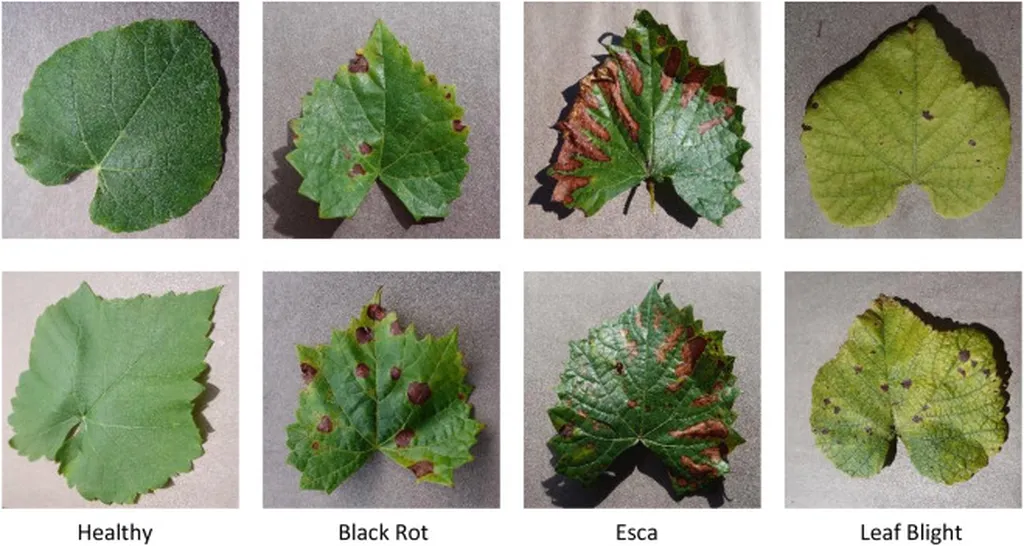In the heart of Kerala, India, a groundbreaking study is reshaping the way we approach grapevine disease detection. Midhun P. Mathew, a researcher from Amal Jyothi College of Engineering (Autonomous), has developed a deep learning framework that could revolutionize precision agriculture, particularly in the grape-growing industry. His work, published in the journal ‘Discover Applied Sciences’ (which translates to ‘Discover Practical Sciences’), is a beacon of innovation in the agritech sector.
Mathew’s research focuses on the application of three convolutional neural networks—EfficientNetB0, InceptionV3, and Xception—to classify grape leaf diseases. The study is a significant step forward in automating disease detection, a critical factor in maintaining crop health and productivity. “Accurate and timely detection of grapevine diseases is crucial for the sustainability of vineyards,” Mathew explains. “Our study demonstrates the potential of deep learning models in achieving this goal.”
The research involved training these models on a dataset of labeled images showcasing various disease manifestations on grapevine leaves, including Black Rot, Isariopsis Leaf Spot, and Black Measles. The results were impressive, with EfficientNetB0 emerging as the top performer. This model achieved a validation accuracy of 99.5% and a perfect macro AUC score of 1.00 on all classes, indicating its robustness and generalization capabilities. “EfficientNetB0 not only outperformed the other models but also showed a remarkable ability to classify diseases with similar patterns,” Mathew notes.
The implications of this research are far-reaching, particularly for the energy sector. Precision agriculture, which relies on accurate and timely data, is a key component of sustainable farming practices. Automated disease detection can significantly reduce the need for manual labor and chemical treatments, leading to more efficient and environmentally friendly farming practices. “The lightweight and low computation requirement architecture of EfficientNetB0 makes it particularly useful for mobile real-time plant disease diagnostic systems,” Mathew adds. This could be a game-changer for farmers, enabling them to make data-driven decisions that enhance crop yield and quality.
The study also highlights the potential for integrating these models into existing precision agriculture systems. By providing real-time disease detection, farmers can take immediate action to mitigate the spread of diseases, ultimately improving the overall health of their vineyards. “Our results serve as a valuable reference for selecting suitable models for automating grapevine disease detection,” Mathew concludes.
As the agritech industry continues to evolve, research like Mathew’s paves the way for more innovative and sustainable farming practices. The commercial impacts of this research are substantial, offering new opportunities for companies in the energy sector to develop advanced diagnostic tools and systems. The future of precision agriculture looks promising, and with continued advancements in deep learning, we can expect even more breakthroughs in the years to come.

